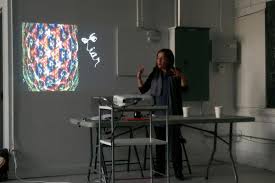In the recently held Technoscience Salon on Evidencing Disaster, Max Liboiron and Kim Fortun provoked a lively discussion around how we ‘narrate’ disaster, disaster’s temporalities, and politicized modes of collecting disaster data. Liboiron provided a compelling example of her experience in data activism in the wake of ‘Hurricane Sandy,’ showing how the configuration of disaster changed depending on whether Sandy was considered a short-term crisis or the exacerbated effect of a slower, long-term disaster of chronic poverty. Liboiron presented salon attendees with startling discrepancies in disaster data, comparing the mass data collected from interviews with ‘official’ disaster data that eliminated individuals who were not counted as ‘representative’ populations according to ‘census’ criteria. Ironically, this eliminated vulnerable populations residing in disaster zones such as low-income black single mothers. Liboiron provoked salon attendees to re-conceptualize disaster’s temporalities and the making of evidence based on what or whom counts as data. Kim Fortun raised the issue of narrative capacity in framing data collection. Fortun emphasized the roles of ethnographers and critical theorists in grappling with the complexity of disaster, what Fortun called “kaleidoscopic insight.” Discussant Christianne Stephens urged the salon to consider how to approach the problem of incoherent evidence, scientific uncertainty, and the problems this raises for communicating with the wider public. Our own Michelle Murphy, another discussant,urged salon participants to reflect on the geo-politics of generating disaster data in neoliberal and neo-conservative capitalist regimes. Murphy highlighted the global asymmetries in what counts as disaster, where, and what form the response takes.

